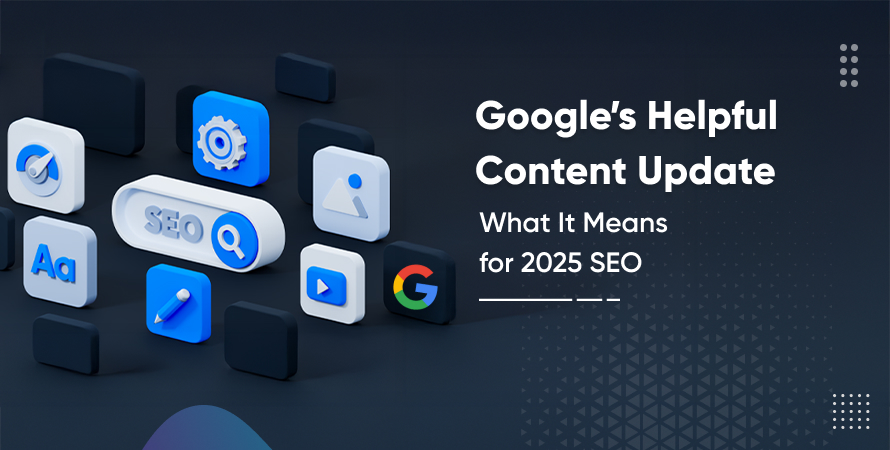Google’s Helpful Content Update: What It Means for 2025 SEO



The world of SEO is always in motion, and Google’s helpful content update is one of the clearest signals yet that the search engine giant wants quality, user-first content to take the spotlight. If you’ve been creating content just to game rankings—without real value—now is the time to shift your approach.
In this guide, we’ll break down what the helpful content update is, how it has evolved, and why it’s even more significant in 2025. Whether you’re an SEO expert, a business owner, or a content creator, understanding this shift is essential for staying competitive online. At Hire Core Web Vitals Consultant, we help brands adapt to these important SEO changes Google makes regularly to ensure long-term success.
Introduction
Over the last few years, Google ranking updates have steadily prioritized content that serves users, not search engines. Gone are the days when keyword stuffing and generic articles could land you on the first page.
The Google helpful content update, first introduced in 2022, represents a broader shift in how content is evaluated. It’s not just about how well your site is optimized—it’s about how useful and relevant your content is to the reader.
In 2025, this update plays an even more crucial role as Google continues to improve its systems to identify genuine, experience-driven content. For website owners and marketers, this means one thing: adapt or be left behind.
What is Google’s Helpful Content Update?
The helpful content update on Google was launched to ensure that people find original, helpful content written by people, for people. It focuses on rewarding content that meets the reader’s needs—especially when compared to content created primarily for ranking purposes.
Unlike other algorithm tweaks, this is a site-wide signal, which means that even a few unhelpful pages can affect your entire domain’s visibility.
This initiative is part of a series of recent Google changes for websites, where the focus is moving away from artificial or templated content toward material that shows real knowledge, understanding, and experience.
To better understand how this fits into the broader SEO picture, we recommend reviewing our article on Google Knowledge Graph: The Ultimate Guide for 2025, which discusses how authority and contextual relevance are becoming major drivers of visibility.
Core Principles of the Helpful Content System
At its core, Google’s helpful content update rewards websites that consistently publish content that:
- Demonstrates first-hand experience or deep understanding of the topic
- Provides complete answers to the user’s query without fluff
- Focuses on a specific audience or niche, rather than trying to cover everything
- Adds value beyond what’s already ranking, such as new insights or data
Key elements of the system include:
- People-first content: Is the content written to genuinely help someone, or is it designed just to manipulate search rankings?
- Site-wide impact: The classifier evaluates the whole domain, not just individual pages.
- Automated signals: These include engagement metrics and content structure to identify helpfulness.
- Content quality and originality: Rewriting top-ranking articles won’t cut it anymore.
A big part of success under this system is understanding crawl depth in SEO. If Google can’t access or evaluate your valuable content, it can’t reward it. Learn more about optimizing your site structure in our guide on Crawl Depth in SEO.
Key Changes Introduced in the 2025 Version
The google latest update for SEO in 2025 has brought several refinements to the original helpful content system. Here are the main changes you need to know:
1. Stricter Detection of AI-Generated, Low-Value Content
While using AI tools isn’t inherently bad, Google is getting better at spotting shallow, non-expert content. If it lacks human insight or firsthand experience, it risks being flagged.
2. Higher Emphasis on Experience (Part of EEAT)
“Experience” was added to the EEAT acronym in 2023. In 2025, Google gives preference to content created by individuals who have real-world knowledge of the subject—whether that’s through usage, observation, or lived experience.
3. Devaluation of Regurgitated Content
Simply aggregating what others have already said won’t work anymore. Google now places lower value on content that doesn’t add something new or insightful to the conversation.
4. Recognition of Updated, Refreshed Content
A content upgrade can now make a meaningful difference. Keeping existing content up to date with current information and trends aligns with the new emphasis on freshness.
5. Greater Impact on Multilingual and Regional Content
With Google expanding the classifier across languages, creators in non-English markets are now more directly impacted by the change in Google algorithm.
To stay aligned, you should also ensure technical SEO elements like Hreflang Implementation are done correctly—especially if you’re targeting multiple regions.
EEAT & the Helpful Content Update: How They Work Together
Google’s helpful content update doesn’t exist in isolation—it operates alongside other quality signals like EEAT: Experience, Expertise, Authoritativeness, and Trustworthiness. As the new SEO update puts more weight on content experience, aligning with EEAT becomes essential.
Here’s how each component ties into your content strategy:
- Experience: Have you personally used the product, visited the place, or tried the method you’re writing about? Google now wants that to show.
- Expertise: Is the content written or reviewed by someone who understands the topic deeply?
- Authoritativeness: Is your site a known and trusted source in the industry or niche?
- Trustworthiness: Does your content feel reliable, accurate, and unbiased?
These aren’t just theoretical. They’re real criteria that influence your site’s visibility—especially after the recent Google SEO updates. If you’re wondering how to put EEAT into action, explore our dedicated guide on building trust with people-first content using Google EEAT.
In short, the google new SEO update rewards those who create content not to chase rankings, but to genuinely help and inform people.
Actionable Tips to Align Your Content with the Update
Implementing changes based on the google helpful content guidelines doesn’t have to be overwhelming. Here’s a breakdown of actionable steps you can take to meet Google’s expectations in 2025:
1. Audit and Prune
Identify thin, outdated, or purely search-engine-first content. Either update it meaningfully or remove it. This helps prevent the site-wide classifier from devaluing your domain.
2. Write with Purpose and Experience
Every article should have a clear purpose and audience. Include insights from real use or professional experience to enhance authenticity.
3. Avoid Redundancy and Keyword Manipulation
Don’t rehash what’s already been said online. Aim to add value with unique formats, examples, case studies, or perspectives.
4. Use Clear Structure and Formatting
Google appreciates clarity. Use headings, bullet points, and logical flow to make content easy to read and understand.
5. Refresh Old Content
A content update can breathe new life into older pieces, making them eligible for better rankings under the latest update in SEO.
6. Optimize for Speed and User Experience
Google also looks at page performance. Make sure your site loads quickly and works smoothly across devices. If you’re looking to improve this aspect, Hire Core Web Vitals Consultant can assist with performance-focused optimization strategies tailored for the 2025 algorithm.
Additionally, you may want to explore whether Google AMP still aligns with your performance strategy. Our guide on Google AMP and SEO explains when and how AMP can still be useful.
How to Future-Proof Your Content Strategy Beyond 2025
With each google ranking update, it becomes clearer: content must evolve with the user in mind. Here’s how you can safeguard your SEO efforts for the future:
- Human-first, not just AI-assisted: Use AI tools to streamline workflows, but always ensure the content reflects genuine human understanding.
- Stay within your niche: Google values websites that show consistency and depth in a particular field, which supports topical authority.
- Engage your audience: Add comment sections, respond to feedback, and encourage interaction—these signal trust.
- Monitor official Google resources: Google’s Search Central Blog often shares news about new updates for Google, helping you stay ahead of algorithm shifts.
And don’t forget, partnering with experts like Hire Core Web Vitals Consultant gives you access to tailored strategies that adapt to the google ranking changes while keeping your site technically sound.
Conclusion
The Google helpful content update is not just another short-term shift—it reflects a long-term commitment from Google to prioritize user experience. As we move deeper into 2025, content that lacks authenticity, usefulness, and clarity simply won’t survive.
Whether it’s a google ranking update, an AI-detection improvement, or a signal tied to EEAT, the message is consistent: focus on quality over quantity, people over algorithms.
Take the time to revisit your content strategy today. A few key improvements now can ensure you’re ready not just for today’s SEO Google update, but for whatever comes next.
Ready to build a site that’s both user-friendly and algorithm-approved? Reach out to Hire Core Web Vitals Consultant to future-proof your SEO strategy today.
Frequently Asked Questions (FAQs)
Google’s helpful content update is an algorithmic change introduced to prioritize content that provides genuine value to readers. It focuses on rewarding people-first content and de-ranking pages created primarily to manipulate search rankings.
In 2025, the update plays a more influential role than ever. It penalizes thin, generic, or AI-overused content and promotes content that reflects experience, expertise, and trust. This shift has redefined SEO best practices by focusing on real-world relevance and updated information.
Unhelpful content includes articles that:
- Are written just to target keywords
- Lack original insights or data
- Don’t fully answer the user’s query
- Appear overly generic or copied from other sources
Such content risks triggering a site-wide signal that reduces your entire domain’s visibility.
Yes, but only if it’s used to support—not replace—real human insight. Google’s systems are better at detecting low-value, mass-produced AI content. Blending AI efficiency with human experience and editing remains the safest and most effective approach.